Common Yellow Woodsorrel
- Oxalis (Oxalidaceae family):
- Oxalis stricta L.
- EPPO code:
- OXAST
- Other names:
- Yellow woodsorrel, woodsorrel, sour grass, sour clover
Species information
- Lifecycle:
- Perennial.
- Propagation:
- Reproduces by seed and by rhizomes.
- Emergence:
- Spring
- Habitat:
- This species has been found predominately in lawns, waste areas, roadsides and pastures, but occasionally it has been found in crops grown using minimum tillage (no-till) practices.
- Competitiveness:
- No data exists on the competitiveness of woodsorrel.
Identification clues
Leaves
- Cotyledons:
- Round, oval, with a very short stalk as if they were directly attached to the stem.
- Young and mature leaves:
- Woodsorrel has three heart-shaped leaflets that make up the trifoliolate leaf. Often, they are bright green in colour, but they can be purplish-green, especially when coming out of the winter. Leaves grow on a long petiole and have margins with fringed hairs.
Mature Plant
- Stem:
- Mature plants have alternate leaf orientation. The stem is green to purple, hairy, and branched at the base.
- Flowers:
- Woodsorrel’s flowers are yellow, with five petals and 4–10 mm in diameter. Seed pods are long and look somewhat like a straight green banana. The flowers disperse seed by rupturing and ejecting seed as far as 2 m (Doust et al., 1985).
- Seeds:
- Its seeds are 1–1.5 mm long, football shaped, and ridged with a sticky coating. They are rusty brown in colour.
- Roots:
- A secondary fibrous root system grows from long white to pink rhizomes.
Note of interest
The plant’s leaves contain oxalic acid, which gives it a sharp, vinegar to citrus-like taste. Historically, the leaves have been dried and added to dishes for flavouring. Some species of woodsorrel may accumulate lethal concentrations of soluble oxalates (Doust et al., 1985), although our guess is that one would have to consume quite a bit for that to be a concern.
Often mistaken for
I know it's not Black medick because woodsorrel has heart-shaped leaflets and flowers with 5 petals compared to the oval leaflets and round to egg-shaped and clustered flowers of black medick.
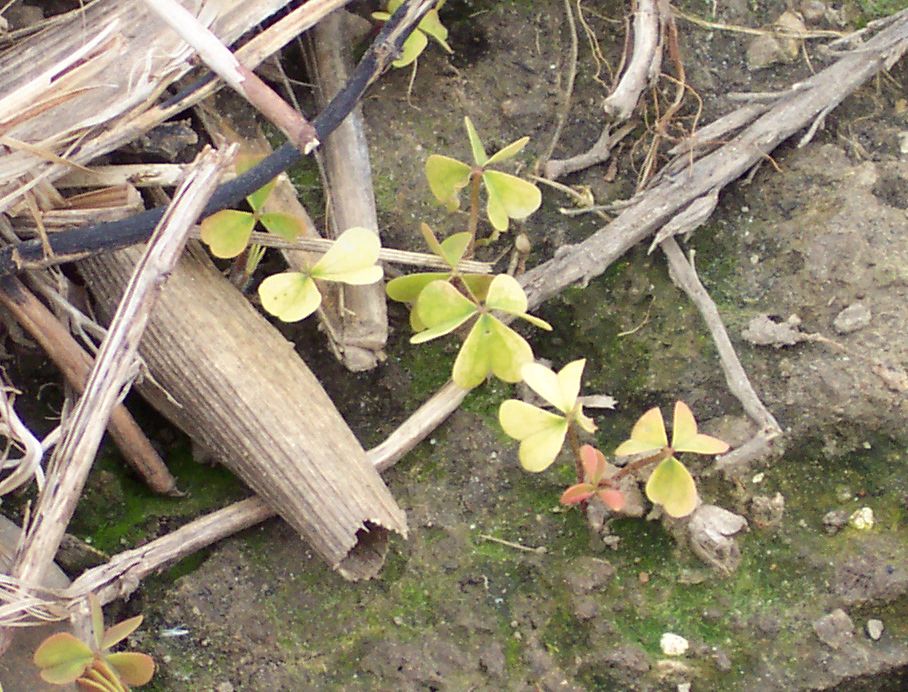
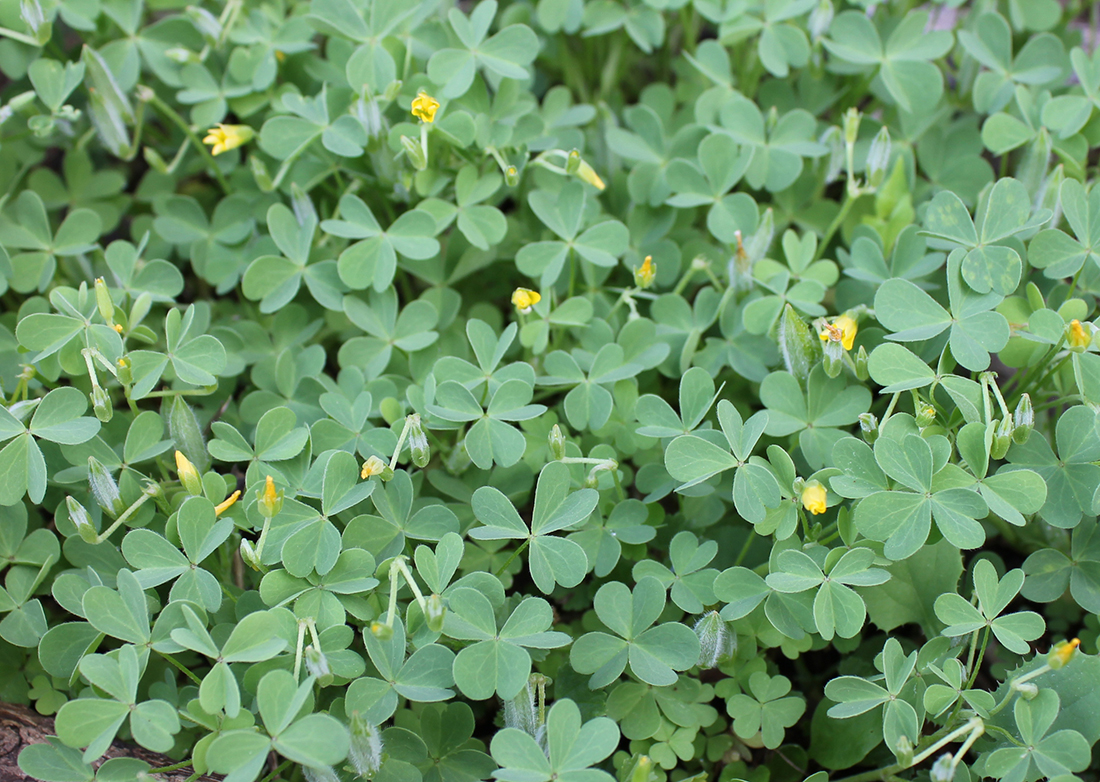
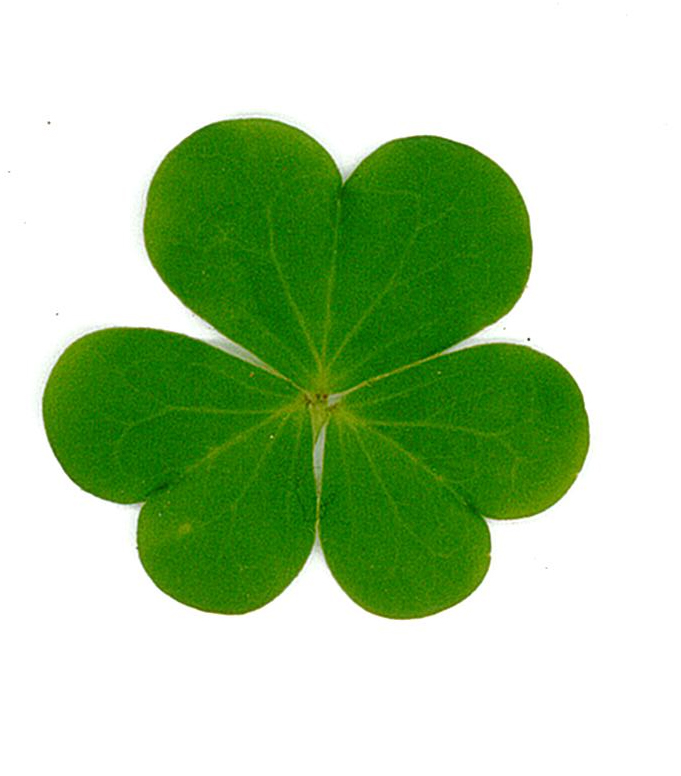
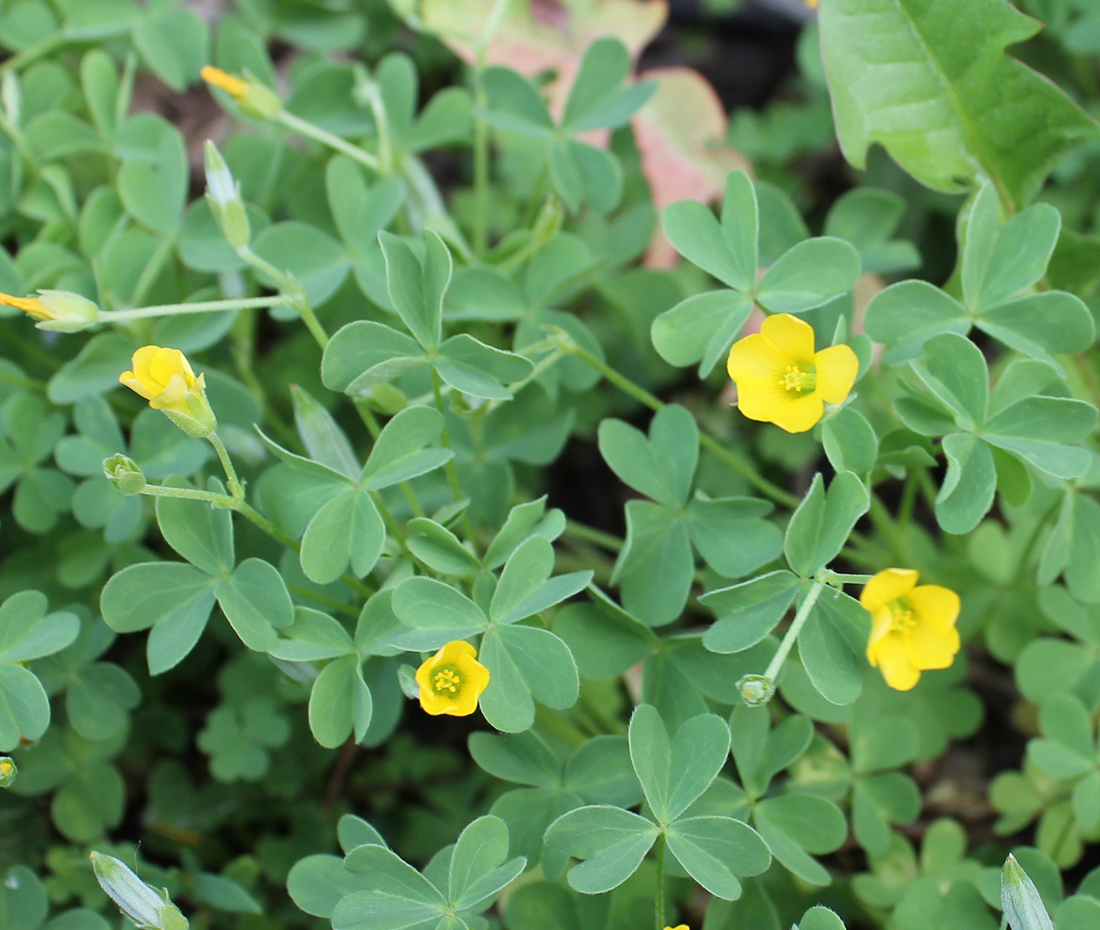
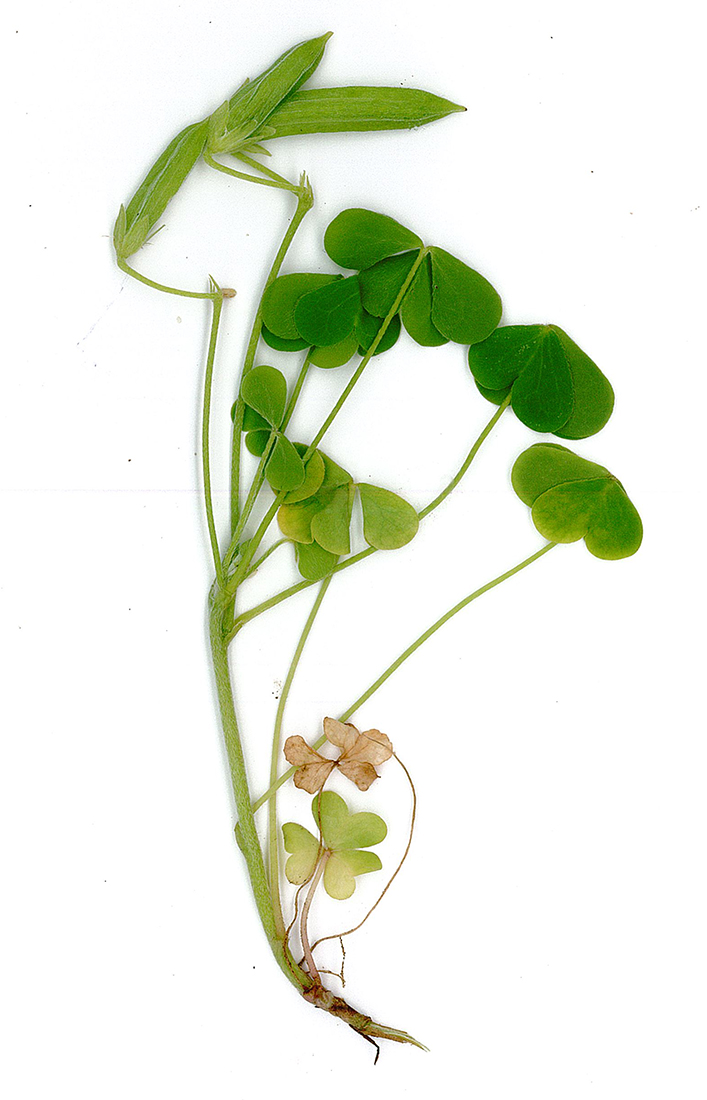
Updated: January 13, 2023
Published: January 13, 2023